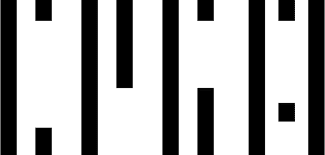Andriu Deplazes: Fluoresce, Galerie Peter Kilchmann, Zahnradstrasse, Zurich
Galerie Peter Kilchmann is pleased to present the first solo exhibition at the gallery of the Swiss artist Andriu Deplazes. Deplazes was born in Zurich in 1993 and lives and works in Zurich, Brussels and Marseille. Entitled "Fluoresce", Deplazes ties in with his recent solo show at Kunstmuseum Chur, Rote Augen, which was devoted to him as winner of the Manor Kunstpreis 2019. At the same time the exhibition will be the start of new cooperation between Deplazes and the gallery. On show will be a freshly created group of works of large and small-format oil paintings on canvas as well as a mixed group of works on paper (in mixed media).
March 6 - April 9, 2020
-
 Andriu DeplazesHirsch und weisse Weite (Deer and white vastness), 2020Oil on canvas120 x 185 cm (47.2 x 72.8 in.)
Andriu DeplazesHirsch und weisse Weite (Deer and white vastness), 2020Oil on canvas120 x 185 cm (47.2 x 72.8 in.) -
 Andriu DeplazesKletternde, 2020Oil on canvas208 x 292 cm (81.9 x 115.0 in.)
Andriu DeplazesKletternde, 2020Oil on canvas208 x 292 cm (81.9 x 115.0 in.) -
 Andriu DeplazesKörper, Stab und Kondensstreifen (Body, stick and condensation trail), 2020Oil on canvas160 x 140 cm (63.0 x 55.1 in.)
Andriu DeplazesKörper, Stab und Kondensstreifen (Body, stick and condensation trail), 2020Oil on canvas160 x 140 cm (63.0 x 55.1 in.) -
 Andriu DeplazesKörper hält Blumen, 2020Oil on canvas50 x 40 cm (19.7 x 15.7 in.)
Andriu DeplazesKörper hält Blumen, 2020Oil on canvas50 x 40 cm (19.7 x 15.7 in.) -
 Andriu DeplazesKörper, Blume und Weite, 2020Oil on canvas62 x 50 cm (24.4 x 19.7 in.)
Andriu DeplazesKörper, Blume und Weite, 2020Oil on canvas62 x 50 cm (24.4 x 19.7 in.) -
 Andriu DeplazesReihe und Glied, 2020Oil on canvas41 x 33 cm (16.1 x 13.0 in.)
Andriu DeplazesReihe und Glied, 2020Oil on canvas41 x 33 cm (16.1 x 13.0 in.) -
 Andriu DeplazesAuge im Kreuz (Eye on cross), 2020Ink on papersheet 36 x 27 cm (14.2 x 10.6 in.)
Andriu DeplazesAuge im Kreuz (Eye on cross), 2020Ink on papersheet 36 x 27 cm (14.2 x 10.6 in.) -
 Andriu DeplazesHände zwischen Beinen, 2020Oil on papersheet 64.5 x 42.5 cm (25.4 x 16.7 in.)
Andriu DeplazesHände zwischen Beinen, 2020Oil on papersheet 64.5 x 42.5 cm (25.4 x 16.7 in.) -
 Andriu DeplazesKörper und Tropfenkreuz, 2020Ink on papersheet 36 x 27 cm (14.2 x 10.6 in.)
Andriu DeplazesKörper und Tropfenkreuz, 2020Ink on papersheet 36 x 27 cm (14.2 x 10.6 in.)
45 x 35.5 cm (17.7 x 14.0 in.), framed -
 Andriu DeplazesBäume mit flüchtigen Strichen (Trees with elusive strokes), 2020Ink and oil chalk on papersheet 28.5 x 25 cm (11.2 x 9.8 in.)
Andriu DeplazesBäume mit flüchtigen Strichen (Trees with elusive strokes), 2020Ink and oil chalk on papersheet 28.5 x 25 cm (11.2 x 9.8 in.) -
 Andriu DeplazesKörper zwischen Bäumen, 2020Oil on canvas90 x 110 cm (35.4 x 43.3 in.)
Andriu DeplazesKörper zwischen Bäumen, 2020Oil on canvas90 x 110 cm (35.4 x 43.3 in.) -
 Andriu DeplazesKatzenwesen, 2020Oil on canvas27 x 35 cm (10.6 x 13.8 in.)
Andriu DeplazesKatzenwesen, 2020Oil on canvas27 x 35 cm (10.6 x 13.8 in.)























